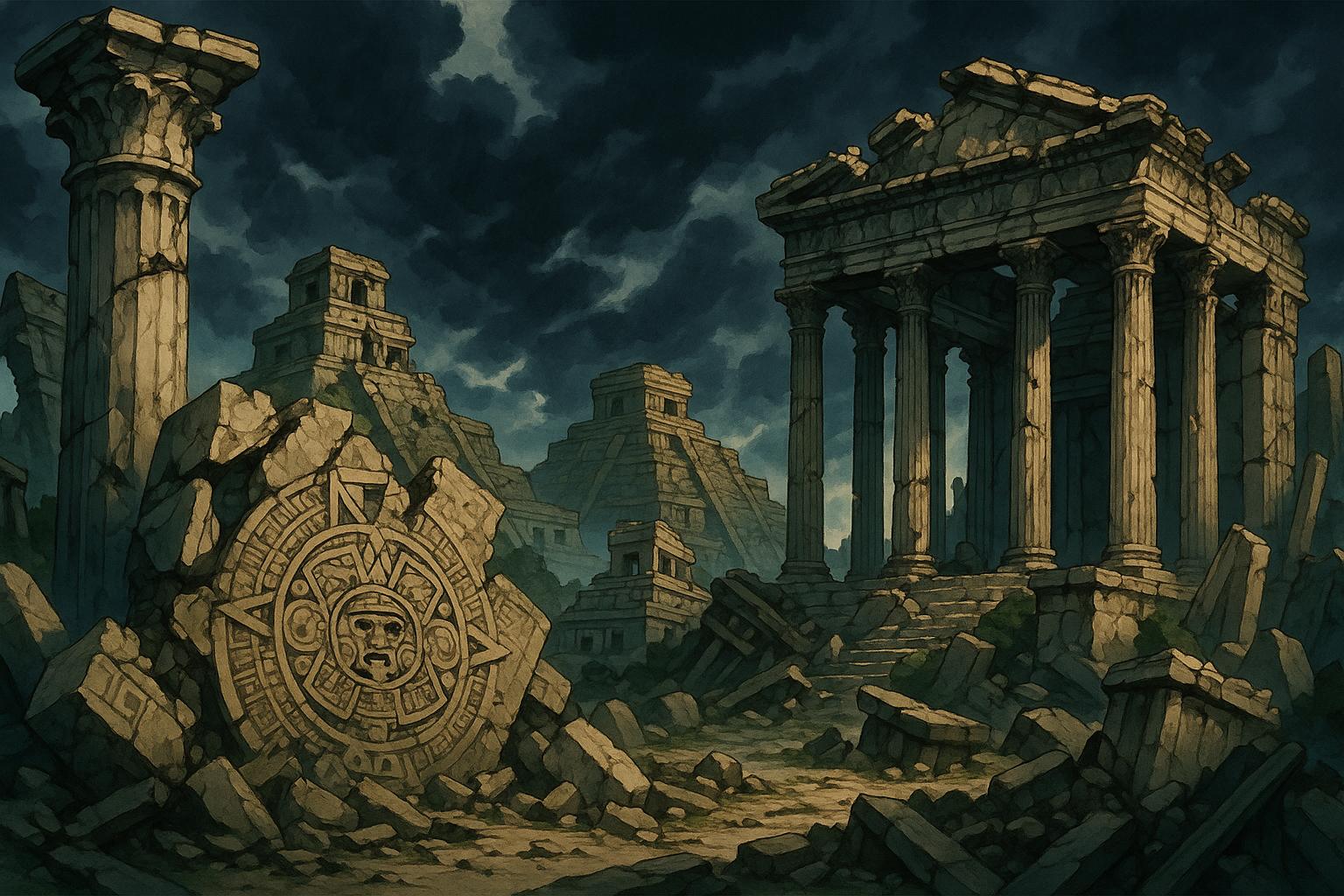The question of whether every society has a 'use-by date' finds resonance in both historical examination and contemporary discourse. As history shows, civilisations such as the Aztecs and the Byzantines have risen and faded, leading us to ponder the fate of our own societal constructs. Luke Kemp, a research affiliate at the Centre for the Study of Existential Risk at the University of Cambridge, emphasises the inevitability of societal transitions, affirming, "This is something which has haunted even the most powerful of empires."
Kemp defines societal collapse as the simultaneous failure of key institutional frameworks, encompassing both governance and economic systems. As articulated in his forthcoming book, "Goliath's Curse: The History and Future of Societal Collapse," he notes that such collapses are often dramatic but relatively rare occurrences. For instance, in the historical context of California, we encounter the profound example of Cahokia—a significant Native American urban centre that thrived around 1000 AD but disappeared by the time of European colonisation. Kemp cites environmental calamities as contributing factors to this decline, stating, "Within about 150 years, it starts to fall apart," alluding to the dual impacts of drought and flood.
Comparatively, the fall of the Western Roman Empire embodies both common and unique elements of societal decline. Following centuries of dominance, the empire was severely weakened by military fragmentation and economic downturn, marking the traditional narrative of collapse as inevitable. However, Kemp contextualises this event within a broader historical framework, suggesting that some sociopolitical structures persisted. He states, "The ideological basis of Rome, which by that stage was the church, actually continued to grow in power." This persistence indicates a complex relationship between decline and renewal. In what may surprise many, Kemp argues that the fall of Rome might not have been entirely tragic; he highlights that after its collapse, indicators of health and well-being improved for the general population in Europe.
Quantitatively, Kemp and his colleagues have analysed the average lifespan of states across history, finding it to hover around 326 years. However, this number encompasses significant variance; the Byzantine Empire endured for a millennium, while China's Qin Dynasty lasted merely 15 years. Notably, larger empires tend to exhibit increased vulnerability, with an average lifespan of just 155 years. This vulnerability may stem from systemic issues, particularly rising inequality, which Kemp identifies as a crucial factor influencing societal fragility. He states, "Inequality tends to make states and societies much more vulnerable."
In light of today’s global context, comparisons are drawn to the precarious state of nations grappling with crises, particularly the United States. The ongoing discourse highlights how mounting social unrest and a pandemic have incited fears akin to those preceding historical collapses. Some experts argue that, while these societal fissures evoke memories of historical decline, the resilience evidenced in overcoming crises suggests an alternative pathway may exist. For instance, historian Mike Duncan explores parallels between the U.S. and Rome, asserting that, despite visible struggles, the nation remains in a phase of potential renewal rather than certain decline.
The pressing question remains: which societies might be next to face collapse? Kemp does not single out one particular nation but implies that broader systemic issues, such as climate change and global inequality, pose threats that transcend individual states. He warns that the "global interconnected system" amplifies potential risks, echoing anxieties surrounding nuclear war and emerging technologies. These concerns, rooted in inequality, create a precarious landscape for all nations.
Ultimately, the lessons gleaned from history are not merely cautionary tales but serve as frameworks within which to examine our contemporary challenges. As Kemp astutely observes, "We tend to get a bit too preoccupied with looking at big external shocks," urging a reassessment of how internal structures might disintegrate over time. Societies are incredibly complex webs of interaction, and whilst historical narratives of collapse offer insight, a nuanced understanding of their roots and patterns may illuminate pathways toward resilience and longevity.
📌 Reference Map:
- Paragraph 1 – [1], [2]
- Paragraph 2 – [1], [2]
- Paragraph 3 – [1], [3], [4]
- Paragraph 4 – [1], [5]
- Paragraph 5 – [1], [2], [6]
- Paragraph 6 – [1], [3]
- Paragraph 7 – [1], [4], [7]
- Paragraph 8 – [1], [2]
Source: Noah Wire Services
